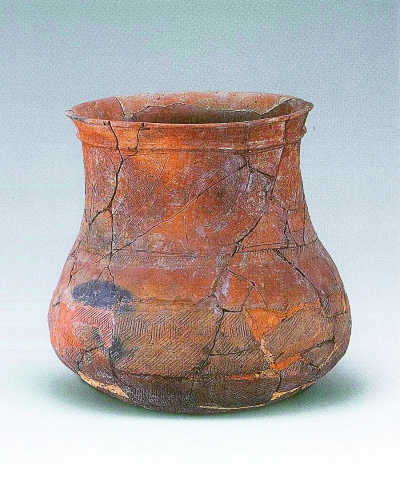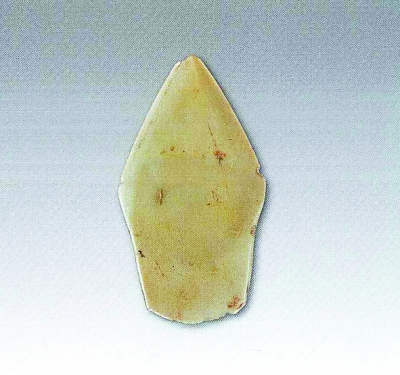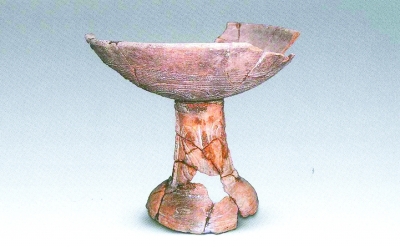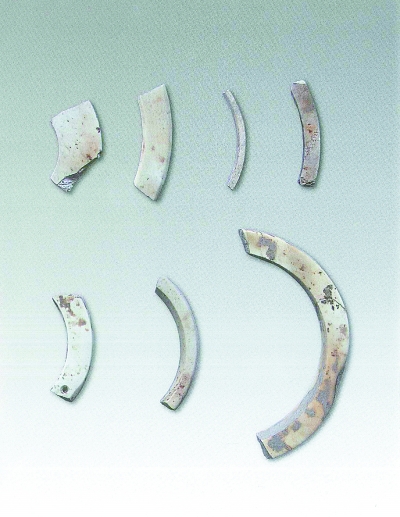Silkroads News
Archaeological Institutes of Sichuan and Shaanxi investigate the directions of the Southern Silk Road
This July, an archaeological report titled The Excavation Report of the Phùng Nguyên
Cultural Site at Yili, Vietnam was published. It summarizes the archaeological
work over the last ten years. This excavation at Vietnam was initiated in 2006
by the Sichuan Antique Archaeology Academy and the Shaanxi Archaeology
Institute. Marking the first time for Chinese archaeological institute to
conduct field excavations at another country independently, this excavation is
ice-breaking in the history of Chinese archaeology.




Since the 1980s, a group of Chinese scholars working on the Southeast
Asian archaeology has noticed that the culture from the Bronze Age to the Iron
Age of the Northern Vietnam shared a number of similarities with that of the
contemporary and earlier civilizations of Sichuan Province. Several jade pieces
found in the Bình Phước Province and the Phú
Thọ Province in the
Northern Vietnam are similar with corresponding items found at the Sanxingdui
cultural site. Both Chinese and Vietnamese historical works record the
existence of the cultural communication between the ancient Shu Kingdom at
Sichuan and the ancient Văn Lang Kingdom in the northern part of present
Vietnam. Thus the archaeological study of the relationship between the culture
of the Sichuan Basin and the Bronze Age of the northern Vietnam, particularly
the influence of the Sanxingdui Culture over the Southeast Asia, strongly
attracts the attention of Chinese archaeologists.
As the initiator of the excavation of the Phùng
Nguyên site at Yili, Vietnam, Dean of the Sichuan Antique
Araeology Academy Gao Dalun said that “this is the first time for China and
Vietnam to have a joint archaeological excavation. It is significant for
studying the early civilization of the Bronze Age of the northern Vietnam and
its cultural interaction with the Bronze Age culture of the southern and the
southeastern part of China, and for understanding the radius of influence and
the whereabouts of the Sanxingdui culture.”
This excavation shows that the Southern Silk Road has linked China with
the Southeast and the West Asia before the exploration of the Western region
and opening of the traditional Silk Road by Zhang Qian. The Southern Silk Road
has already functioned during the Shang - Zhou periods when the Phùng Nguyên culture was
flourishing at Vietnam.
The transnational cooperation led by the archaeological work at Vietnam
1992, Gao Dalun was invited by Vietnam scholars to conduct
archaeological investigations with Vietnam archaeologists when he was
participating in a conference of East Asian jades at Hong Kong. 2004, Gao Dalun
started to talk about the details of the cooperative excavation with the
Vietnam side, right after his first-time visit to the jade collections in the
Vietnam Museum during an academic investigation at the China-Vietnam border,
because those jade objects show distinct similarities with the remains from the
Sanxingdui culture. The Sichuan Antique Archaeology Academy also invited the
Shaanxi Archaeology Institute for enhancing the excavation.
2006, the archaeological team constituted by the Sichuan Antique Archaeology
Academy and the Shaanxi Archaeology Institute set off to Yili at Bình
Phước Province. The
Vietnam side coordinated positively with the China side. The team could select
excavating locations independently once the large area has been settled down.
Eventually, after selecting and investigating for digging sites, the team
selected Yili at the Bình Phước Province to
excavate, and released four excavating units successively.
Chinese archaeology team’s work has been admitted by the National Museum
of Vietnam during the excavation. Lei Yu, the leader of the team, head of the
Sanxingdui Archaeological Workstation of the Sichuan Antique Archaeology
Academy, recalled that the Luoyang shovel has played an important role and
attracted the attention of the Vietnam archaeologists very much. It is the
first time for the application of the Luoyang shovel at Vietnam. Our systematic
methodology and theory that has been applied through the investigation,
excavation, renovation and arrangement have also been well-represented during
this excavation.
Gao Dalun said that they found very rich remains after working for
around three months, particularly a number of objects that relate to the
Sanxingdui culture. This excavation at Vietnam marks a good start of the
transnational work of the Chinese archaeology, reminding us of the butterfly
effect. In the near future, Chinese archaeology institutes will keep on working
at Russia, Kenya, Laos, and other countries. Chinese archaeology is going onto
the world stage step by step.
“As a leading power, China should exert influences not only on the
economy, but also the culture. In some conditions, the culture should be the
first point to cover. We should learn about other cultures at first if we want
to communicate with other nations. Archaeology is one of the paths,” suggested
by Gao Dalun. The nation should take a macro view to evaluate the transnational
excavation by relating it to the national strategy and action. He also
expressed his hope of training more students for excavating abroad.
Providing new clues for reconstruct the Southern Silk Road
The Phùng Nguyên
site at Yili is well known in Vietnam. It was spanning from the Bronze Age to
the Iron Age. The Phùng Nguyên culture was named
after the excavation at Phùng Nguyên
in 1959. More than 100 sites of the Phùng Nguyên culture have been found till now, with
70 of them have been excavated formally. Chinese scholarship on the Vietnam
culture started relatively late, and focused mainly on its relationship with
the south and southwest China.
The Chinese excavation at Yili concentrated
on the southern part of the Yili Temple, and found 78 sites, 77 of which
belongs to the Phùng Nguyên culture. Abundant
stonewares, jades, hornworks, and pottery fragments have been found.
The research by the joint archaeology team reveals that the Yili site
was built during the early to the middle period of the Phùng
Nguyên culture. Its absolute date is
considered to be 3500 to 3700 far away from now. Yili site shares similarities
with sites found at Guangxi and the watershed of the Lancang River.
The team also mentioned that the Sanxingdui culture has exerted huge
influence over surrounding areas, especially the Phùng
Nguyên culture. Jade daggers, jade
tablets, T-shaped jade rings, and jade discs found at Phùng Nguyên highly resemble the same type remains
found in the Sanxingdui sites of the Upper Yangtze River in terms of their
shapes, skills, as well as decorations.
This research also proves that the Southern Silk Road should have been
the most convenient path linking Sichuan and Vietnam. The Southern Silk Road
starts from Chengdu and goes southwards into two branches: the east and the
west. The west road heads down south to Dali through the yak path, while the
east arrives at Dali through the Wuchi path. Converging at Dali and passing via
Baoshan and Tengchong, the two roads head toward the west to the Myitkyina at Cambodia, or arrives at Bhamo of Cambodia
via Ruili. The eastern part of the foreign sections of the Southern Silk Road
includes the Honghe path, which goes to Honghe from Sichuan through Yuanjiang
of Yunnan, and the Zangke path which goes through Yelang and arrives at Fanyu
(present Guangdong Province). The Zangke path facilitates the interaction
between the southwest region and the southeast coastal areas.
According to the report, one can find a number of similarities among
civilizations streching from Chengdu of Sichuan to the Southeast Asia,
particularly the Vietnam. The most representative factor is the line-decorated
potteries. During the Shang-Zhou period of China, in the region from the upper
Yangtze River to the Southeast Asia, from the basin of the Anning River of the
Liangshan Prefecture at Sichuan, to Xinguang and Baoshan of Yunnan, the
Gantuoyan site of Guangxi, and the Phùng Nguyên culture of Vietnam, cultural
interactions at various levels and scales have been flourished and thus
enhanced the communication among different regions.
This excavation provided inspirations for
the reconstruction of the Southern Silk Road. Gao Dalun said that the following
works will further enhance our understanding of the historical context of the
cultural interaction between the Sanxingdui culture and Vietnam, and provide
evidences for the construction of the Silk Road in a new era.
Category: English
News
Silkroads News
Key words:
